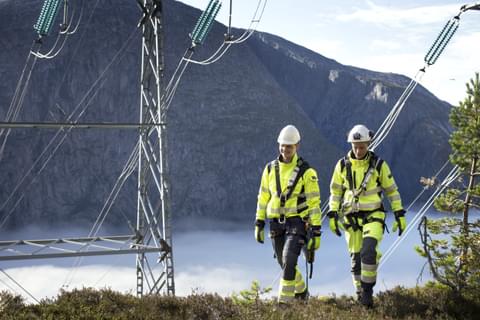
The average customer might not realise it, but the person across the street installing a meter, inspecting a substation, or maintaining a power line is often not a direct employee of the energy provider, but a contractor. I would forgive them for thinking otherwise, considering the brand logo on the back of their workwear.
But many large operations use contractors and, in some cases, they can make up most of the workforce. This makes them an essential part of maintaining both the energy network and the brand perception of the company.
Energy companies do what they can to provide strong onboarding and training standards, to ensure a consistency of service when using a mix of employees and contractors. But what about safety? How can they ensure alignment across the workforce?
I have worked closely with large energy providers for years, and I would say that ensuring safety alignment across thousands of workers is one of the toughest challenges in the industry.
I have narrowed it down to five key issues they face…
This creates huge concerns. Mismatched gear means inconsistency and confusion on site when contractors and employees are working side by side. If workers are questioning what the right PPE is, then this leaves the workforce more vulnerable to shortcuts and hesitation.
From a brand perception standpoint, this also leaves the public questioning the professionalism of the organisation. You could also be facing the resulting stock management problems this causes, let alone the issues with tracking compliance.

Unfortunately, contractors sometimes get the ‘short version’ of onboarding and training to meet tight operational deadlines. This can result in knowledge gaps such as hazards and equipment, as well as inconsistent safety behaviours across the workforce.
Fragmented training makes it hard to build a shared understanding in safety, which then leads to a variation in performance. From a safety perspective, this lack of preparation and knowledge can increase the likelihood of incidents.
Safety isn’t just rules, it’s shared habits, language, and expectations. Without alignment, culture breaks down. You see different interpretations of what is acceptable, and that leads to inconsistency in how risks are managed.
Contractors come from diverse backgrounds, companies, and sectors, each with their own approach to safety. Unless there is a clear and consistent culture that everyone buys into, behaviours will drift. This can be subtle at first, but over time it erodes the safety standards.
If contractors aren’t measured, they’re not managed, which reduces visibility for leadership. Without shared safety metrics across the entire workforce, it becomes difficult to track performance, identify trends, or intervene early. Contractors may be excluded from internal reporting systems, or their data may be held separately by third-party suppliers.
This creates blind spots that make it harder to understand the true safety landscape. When KPIs are aligned across employees and contractors, it becomes possible to manage safety holistically. That means better visibility, better accountability, and better outcomes.
When PPE comes from various sources, consistency disappears. A single contract sets the tone, but different teams order from different suppliers, using different specifications, at separate times. This leads to deviation in quality, delays in delivery, and confusion over what is approved for use.
It also makes it harder to manage stock levels, forecast demand, and respond to incidents. A fragmented supply chain undermines safety by introducing uncertainty. A managed supply model simplifies procurement, improves reliability, and ensures that safety goals are built into every order.

How can you create safety alignment across such a diverse workforce made up of thousands of contractors?
You need consistency. Not just in what is worn, but in how safety is delivered, monitored, and reported. To provide this to our customers, Tower supports the continuous provision of high-quality PPE through a fully managed supply model. This helps energy providers to:
This is not just about supplying, it’s about building a safety infrastructure that holds up under pressure, across thousands of workers. Because when safety is fragmented, risk increases. And when everything is aligned, including equipment and data, everyone benefits!

Bruce works at the forefront of global requirements and is a leading authority on arc flash PPE. Bruce is also highly knowledgeable about the requirements of the Energy and Utilities industry.